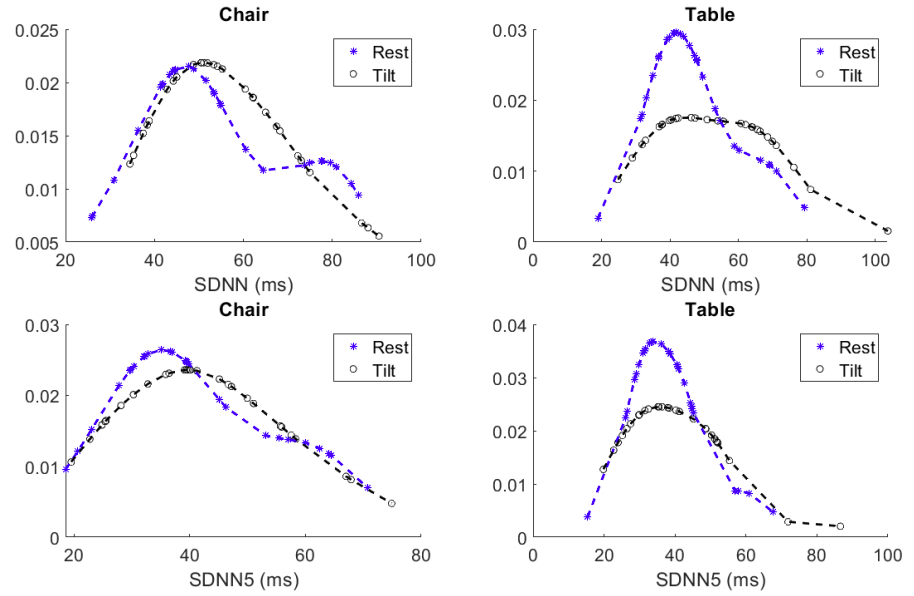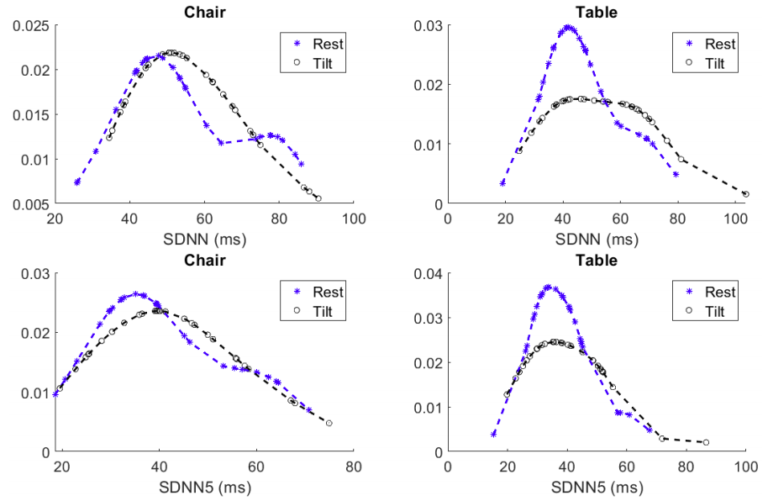
Heart rate variability (HRV) measurements are performed using a tilt-table (TT) to diagnose dysfunctionality in the autonomic nervous system (ANS) and the cardiovascular system. To maintain homeostasis, the ANS adapts to body position changes through alterations in sympathetic and parasympathetic responses that can be quantified by extracting time-domain and frequency-domain parameters from the heart rate signal. When body position is changed from supine to erect, a healthy subject’s response also shows changes in ANS activity. However, TT can be unsafe or uncomfortable for elderly or overweight subjects. Furthermore, it may induce anxiety which alters the HRV measurements. This study proposes an alternative strategy to replace the TT with a zero-gravity chair (ZGC). The statistical analysis between HRV parameters from the TT and the ZGC shows that ZGC can be a feasible alternative to TT. Therefore, ZGC can be used as a more convenient, secure, stable and safer option to the traditional HRV analysis with TT.

